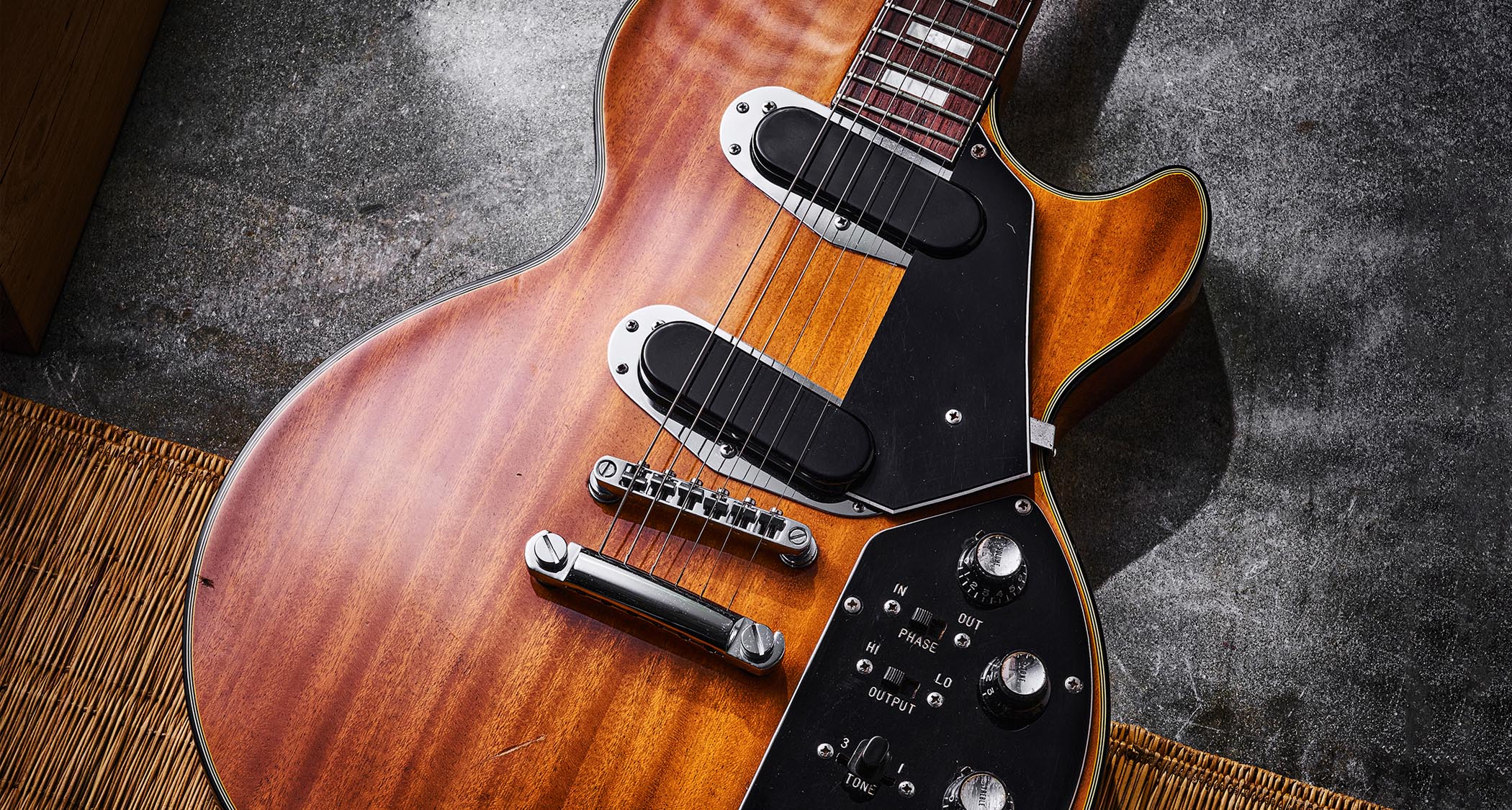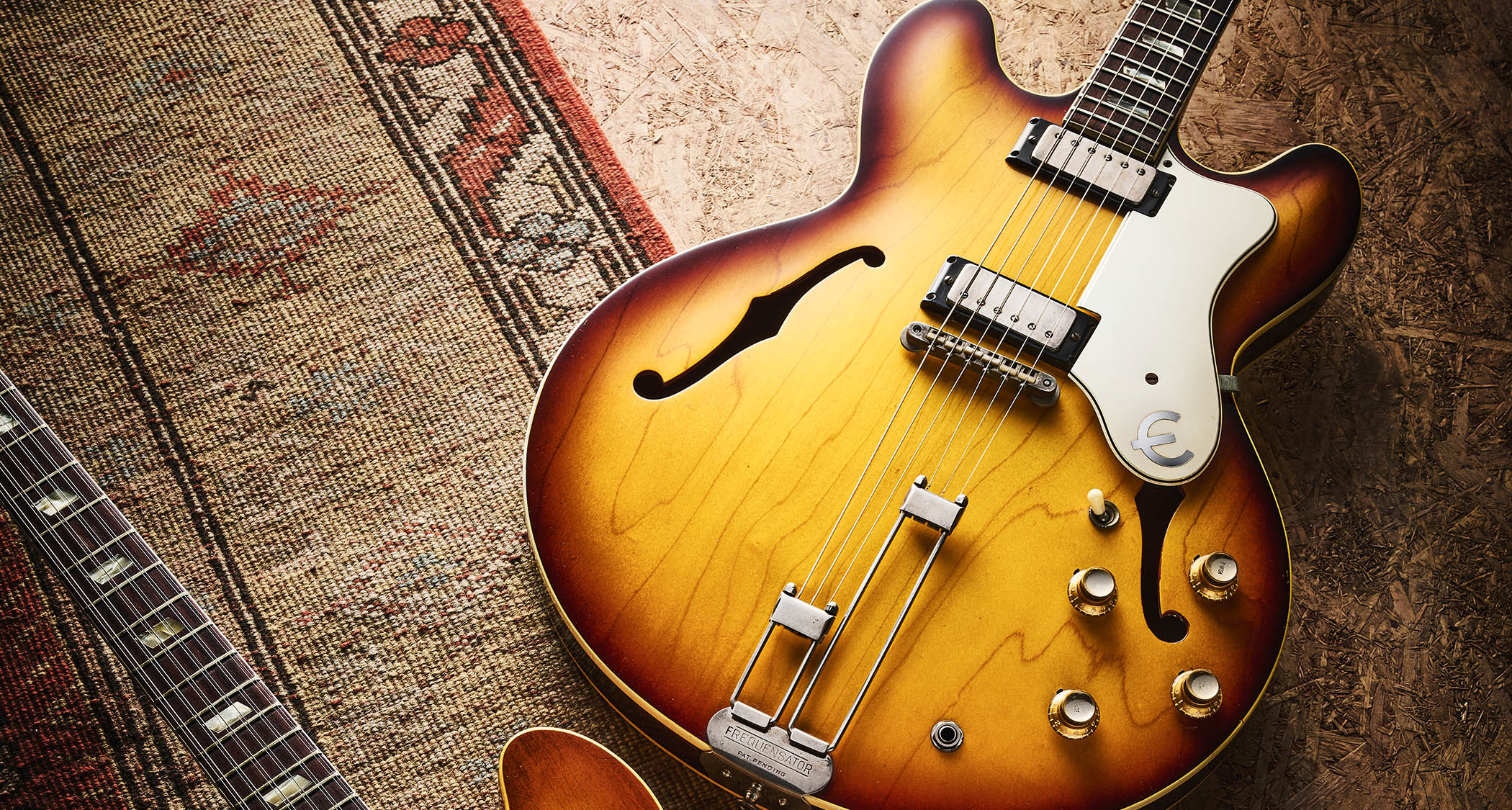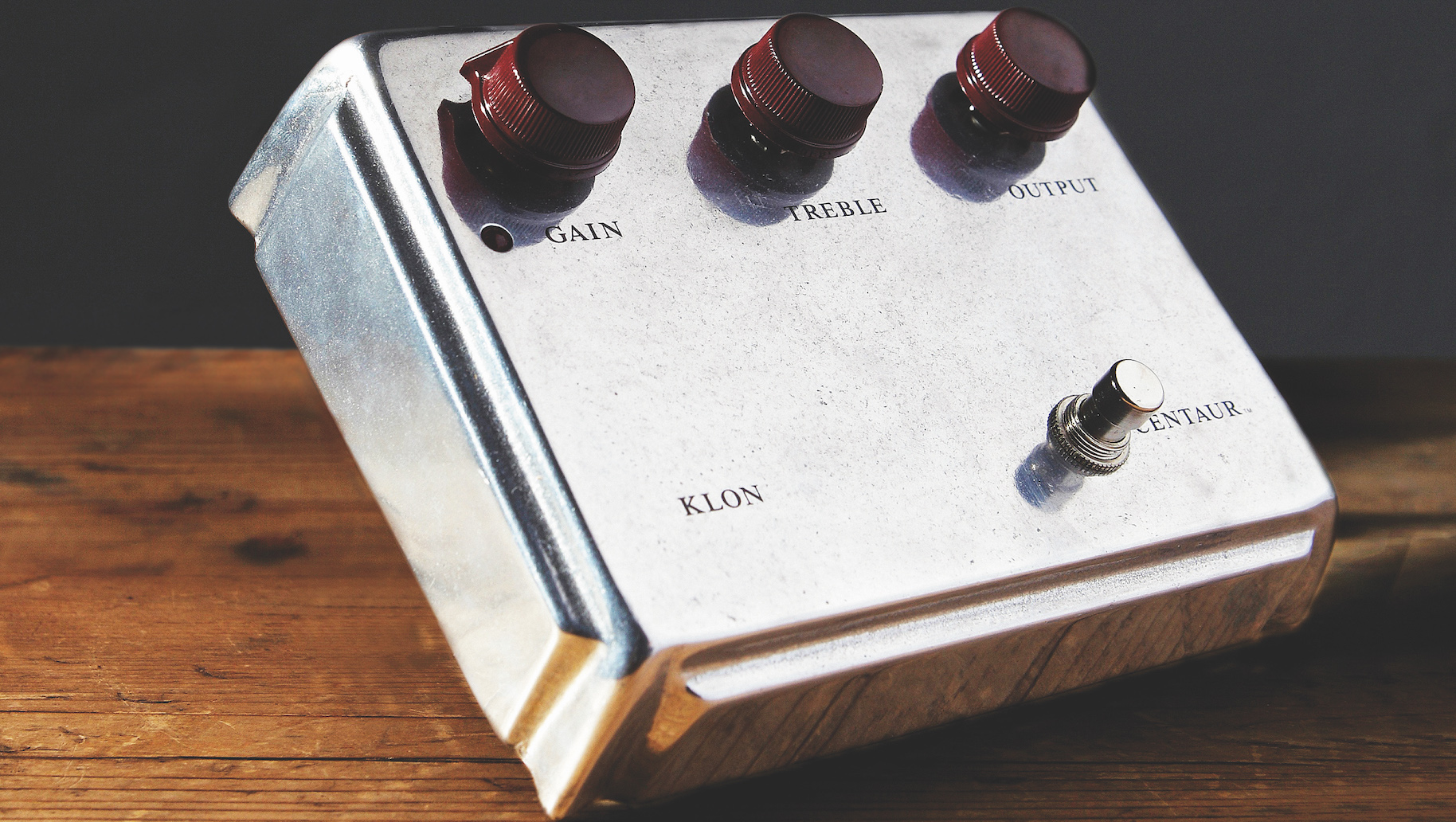Upgrade Your Original Guitar or Buy a New Ax? What You Need to Know
Is it worth upgrading your first instrument with brand-name tuners, pickups and other items? Or do you ditch it altogether in favor of a newer, shinier model?

You've learned your modes, mastered the four chords found in every pop song and can play the intro to “Crazy Train” with your eyes closed. Congratulations—you are no longer a novice guitar player! Welcome to the wide world of intermediate playing.
As an intermediate player, everything changes. Rock is harder, blues are sadder and acoustic strumming attracts less eye rolls. The question now is: what do you do with your first guitar?
As a player’s guitar skill progresses, their needs and expectations of the instrument change. Taking a look at the options available to spruce up your first instrument can extend its playability—but is it worth upgrading with brand-name tuners, pickups and other items so it can meet the new demands you’ll be placing on it?
Or do you ditch it all together in favor of a newer, shinier model that meets your more advanced needs? Let’s examine both approaches, and help you, the newly crowned intermediate player, figure out which one works best for you.
Should I Upgrade?
Yes, assuming you’re one of those who is confident in your tinkering abilities and isn’t afraid of getting a little solder on the workbench. Or perhaps you trust a local shop or guitar tech to do the work once you decide on which parts you want to upgrade and what the cost will be.
Luckily, there is a host of resources for those looking to upgrade their instrument’s parts, hardware or electronics. Pickups, generally considered a driving force in the guitar’s overall sonic character, are an easy foray into the world of tweaking without disrupting much else within the instrument—it’s a tangible first step to increasing a guitar’s tonal range and ability.
Get The Pick Newsletter
All the latest guitar news, interviews, lessons, reviews, deals and more, direct to your inbox!
Pickup companies have made it easy in recent years to select which model is right for you, thanks to websites with eye-catching graphics and sound clips that demonstrate pickup performance with varying stages of amp gain. Two good places to start are DiMarzio.com and SeymourDuncan.com, both of which offer myriad tools for finding the right pickup for your guitar, comparing tonal properties and output levels, examining wiring diagrams and more.
For other fundamental and swappable components like tuning machines, wiring, new knobs, strap buttons, switches and more, players can look into the inventories of companies such as Stewart-Macdonald, which sells parts of all sorts at StewMac.com. Such upgrades can change the instrument’s action, ability to hold tune, and ensure the electronics are road-worthy.
Sperzel USA manufactures locking tuning machines that not only hold tune better than most stock tuners found on entry-level instruments, but also feature their Trim-Lok system, allowing for quicker string changes. Upgrading an instrument’s tuning machines is a popular decision due to its relative ease and impact it has on instrument playability and reliability.
If your guitar has a Floyd Rose tremolo, players have taken to upgrading their stock sustain block, which balances the floating tremolo within the guitar, in an effort to increase their instrument’s resonance and sustain.
According to Stephen Smith of Seymour Duncan’s online blog, an upgraded sustain block can pay noticeable dividends when it comes to increasing sustain, as well as giving players thicker and warmer tone. Further, a player swapping out their stock pot metal block for one made of either tungsten or brass can expect some measured difference in feel and balance of the instrument.
Exceptionally attuned players can also easily upgrade their tremolo’s springs and spring claws, both of which can further shape the instrument’s tone. For the players who care about signal clarity and resiliency, Chicago-based Switchcraft offers plenty of options for more adventurous tinkerers. The company offers a variety of pickup selector switches, guitar end pin jacks, plugs and more, ensuring your instrument is directly connected and communicating with the amplifier’s signal.
These switches are found on Jackson Guitar’s USA models, as well as their custom builds due to their respected reputation. In the long run, making such upgrades can be more cost effective than making a new purchase.
“If I could make my old guitar sound equivalent to a newer model by making a few upgrades on the instrument, I could save anywhere from $500 to $3000,” says Pete Ford, a Chicago-based guitarist who teaches online at Reverb.com. Specifically, Ford mentioned installing onboard preamps which add a boost circuit, higher-quality control knobs, bridge saddles, as well as even going so far as to replace worn-out frets.
Should I Buy New?
Today, guitar manufacturers offer a host of options for players looking to upgrade to a better intermediate guitar, but not looking to spend a fortune on one. Fender, Gibson, Epiphone, Jackson, ESP LTD and Ibanez all offer products that can be purchased new in the $400 to $1,000 price range, yet have premium features such as active electronics, locking tremolos and higher-quality fretboard woods like ebony.
Even brands like Paul Reed Smith, known for their premium offerings that can sell for $5,000 and beyond, have products readily available in the $500 price range. Popular models include the Epiphone Les Paul, which comes in a variety of models that echo the offerings of their more expensive Gibson cousins. For aspiring metal players, Jackson’s X and Pro Series offer some of the brand’s signature features of their USA and custom models at a reduced price.
These mid-range options don’t even factor in the robust used gear market, where players can grab high-end, name-brand instruments at a steep discount. Many big-box guitar stores and local shops sell used instruments, and the price is almost always flexible. There are also a host of places to poke around online. eBay and Craigslist have ample inventory, but the buyer needs to be more discerning regarding their instrument purchases.
Reverb.com offers another avenue for purchasing previously owned gear online, allowing musicians to shop within their own buying environment. Tyler Larson, guitarist and founder of the popular online lesson series Music Is Win (and contributing writer at GuitarWorld.com), feels that as a player becomes more advanced, they will grow to appreciate the nuances of a pricier instrument.
“It’s much easier for a player to research, try out and actually feel the tangible difference of a premium quality guitar when they play it,” he says. Larson noted that of all of the upgrade options, he’d consider pickups to be the most effective in shaping overall tone, but buying new may be best.
“A guitar player will benefit from a higher overall quality instrument than upgrading certain parts of a lesser instrument.” It would seem that Larson isn’t alone. Brad Myers, a jazz and rock guitarist in Cincinnati, usually tells his students to buy the nicest guitar they can afford that also fits them in terms of size, style and level of seriousness.
“I've always tried to trade up or buy something that inspires me to keep growing as a musician,” he said. “It tends to reap dividends in terms of the renewed excitement to practice and perform with a guitar they love.”
Matt Brown, a Chicago-area guitarist, agrees. “Once someone has decided that they are at least semi-serious about playing, it usually makes more sense from a financial standpoint to invest in a new guitar."
Conclusion
In the end, players must decide what’s right for themselves, and their wallet.
Is it worth paying $200 for a set of pickups, when you can get an entirely new instrument for slightly more money? For others, it’s a question of whether paying double or triple the cost for a new guitar is worth it when a few small upgrades can help completely revitalize their tone.
Our advice is, don’t overthink it: as long as you’re playing, whatever you hold in your hands is worth it.
Things to Consider When Upgrading
• Most important: swap out your pickups! It’s the quickest and easiest way to radically change the sound of your instrument.
• Is your nut up to snuff? By changing out the stock (and likely cheap) nut to either bone, brass or graphite, you can quickly enhance your instrument’s tone. A nut replacement can even allow you to change the string spacing, making it easier to bend and chord.
• Even more far-reaching than a nut upgrade is swapping out the bridge saddle. Available with a host of plug-and-play options for instruments with fixed bridges, a new saddle will tweak the sustain and sonic character of the guitar. Players can choose to install saddles with different materials, including brass, steel or titanium.
• Take control of your control knobs. Add some variable tone controls that can boost your mid-range or scoop it, or take your tone knob to the next level with a push/pull setup. This area of the guitar is often overlooked, so take advantage of the plentiful tonal possibilities!
• If you're feeling brave, look at your frets. Do you have some fret buzz? If so, it may be time to look at investing in a good reworking of the neck to ensure your frets are level. With a variety of sizes and materials to choose from, you can easily change the feel and action of the guitar through the frets.
• If you have a bolt-on guitar, swap out the neck! With plenty of OEM and aftermarket replacement options from respected companies like Warmoth, replacement necks come with a variety of woods, fretboard options, headstock designs and more.
• Don’t forget to check out your wiring and jacks. All these upgrades will mean nothing if the signal isn’t reaching the amplifier!
Things to Consider When Buying
• Identify the features you want. Do you see yourself dive-bombing after a solo? Get a floating tremolo. Want that classic sound? Look for some lipstick-style pickups and a fat neck. There are a ton of features out there—make a list and stick to it!
• Set a budget and explore options within that range. It’s easy to spend money when it comes to gear. Set your expectations early.
• Haggle! New gear prices aren’t always set in stone, so make a reasonable request and see what happens. Sometimes, even online retailers will work with you on pricing. For used instruments, you can even offer interesting trades—within reason of course.
• When checking out used gear, always remember: buyer beware! Not every instrument is a vintage collectible worth an arm and a leg. If an instrument was crummy in the Eighties, the fact that it’s now more than 30 years old doesn’t improve its quality. Be sure to do your homework and understand the instruments you’re looking to buy, and the dynamics of the market.
• Play anything and everything! By playing a variety of instruments with differing features, you will broaden your sonic horizons and more fully understand what it is you want out of your guitar playing.
• Practice, practice, practice. Great gear means nothing without great technique! Whether buying new, used or upgrading, it’s always important to continue playing the instrument, and pushing your skills to the next level.
“It’s unreal that my own name is one of the coolest finishes I think Fender has ever done”: Fender teams up with country superstar Brad Paisley on a signature Telecaster that brings back a cult classic finish from the 1960s
“We were trying to make the best guitar that ever happened in world history”: ESP’s latest Richard ZK ESP and LTD signature guitars are heavy rock riff machines of the highest order


![The Night Flight Orchestra all glammed-up in stage clothes and photographed against a green backdrop: guitarists Rasmus Ehrnborn [second from left] and Sebastian Forslund [fourth from right]](https://cdn.mos.cms.futurecdn.net/Wy6UcSKUxjjiWvEWzYf3y3.jpg)







